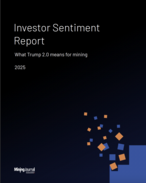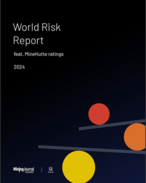This article is 5 years old. Images might not display.
It comes after the latest Gender Diversity Report by the AICD found the percentage of women on ASX 200 boards fell to 29.5% at the end of September from 29.7% at the end of June.
The proportion of women being appointed to boards fell from 45% in 2018 to just 31.7%.
The AICD is concerned that its target of 30% women on boards, set in 2015, has still not been reached.
AICD CEO and managing director Angus Armour said the results should serve as a wake-up call to directors, investors and shareholders across the ASX 200.
"Australia is not lacking for talented and experienced women, and the profile of female directors being appointed to their first ASX 200 boards over the past two years is evidence of this," he said.
"Boards struggling with gender diversity must challenge themselves and make commitments to do better.
"They should reflect on whether their search processes are effective and competitive enough to access the large talent pool of female directors in Australia, including whether their recruitment firms are helping them to eliminate any bias and to identify a diverse pool of candidates."
Only 88 companies have over 30% female directors, and most are at the larger end of the index.
The AICD said the poor performance could largely be directed at companies down the index.
The number of all-male boards increased to seven, including gold producer Silver Lake Resources and mining services firm NRW Holdings, both of which joined the ASX 200 this year.
The report also criticised the large number of companies (46) with only one female director.
"Too many companies continue to think that having one woman on their board represents gender diversity," Armour said.
That includes Rio Tinto, with just one female director, Megan Clark, out of eight.
The other miners with only one female director are Mineral Resources, Regis Resources, Gold Road Resources, Saracen Mineral Holdings, Pilbara Minerals, Ausdrill, Sandfire Resources, Western Areas, Evolution Mining, Galaxy Resources, New Hope Corporation, Orocobre and Independence Group.
IGO appointed a second female director earlier this month.
There were also a large number of miners in the ASX 300 without a female director at September 30, including Ramelius Resources, which appointed Dr Natalia Streltsova this month.
The others were Mount Gibson Iron, Jupiter Mines, Dacian Gold, West African Resources, Paladin Energy, Bellevue Gold, New Century Resources, ioneer, MACA and Emeco Holdings.
The AICD will soon send letters to ASX 300 chairs, inviting them to become members of the 30% club and signal their commitment to 30% female directors by the end of 2021.























